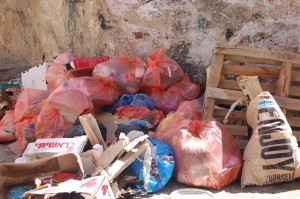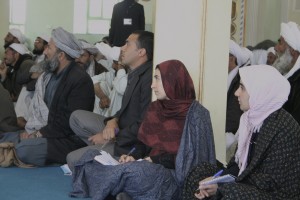In September 2011 David Barsamian, an American Radio broadcaster and writer, was deported from New Delhi airport on arrival. Immigration officials cited a 2009 violation of his tourist visa (which he used to report on the situation in Kashmir) as the reason for why they now banned him from the country. A ‘side’ fact is that Barsamian has travelled to India regularly over the past 40 years and has commented on many hot spots in the country, including Kashmir. Needless to say, his stories and analysis do not coincide with the government’s narrative.
Barsamian was not the only person to be refused entry into the world’s largest democracy. Professor Shapiro, a US based academic, was refused entry citing the same reason – ‘violation of visa’. Many argue that it was largely because his Indian born wife, Angana Chatterjee, also a US based academic, happens to be the co-convener of International People’s Tribunal on Human Rights and Justice in Kashmir. Recently, Gautam Navlakha, a human rights activist, was denied entry at Srinagar airport also because of his writings and comments on the Kashmir issue.
So, would securing research and journalists’ visas resolve the problem? Probably not; instead of deportation, visas would be denied. Academics in general, and journalists in particular, gather information in all places and at all times. While some of them tend to take on an activist’s role after gaining first hand knowledge and experiences of those in conflicts, others are, by default, analysts who depend on such information for strengthening their academic credibility.
All of the above cases come from India, but the fact is that every country today, including the US and UK, routinely keep academics, activists, and journalists from entering their borders. That democratically elected governments feel the need to keep individuals who are critical of them off of their soil definitely represents politics of fear. Governments fear those who have the power to tell the world the “truth”.
It is politics by fear because it basically threatens anyone presenting views opposing the government with more severe repercussions than deportation. This is captured in the words of Barsamian in a Tehelka report: “I have my fingernails, no welts on my back, no electric shock. I am safe and sound unlike some others”. And, it is politics for fear because actions such as deportation are meant to deter people from openly questioning the government. Fear is an emotion, represented through the emotion of hate and by adopting defense mechanisms and aggressive postures.
So, if this is what democracies do, then what gives them the right to morally challenge and attack dictatorships, theocracies, and autocracies which also treat those who question their rulers as “enemies”?
Can India, as the world’s largest democracy, try setting an example? Can she transform her politics to tolerance, openness, and respect for those who tread her soil? Because, let us be clear: the politics of fear, by fear, and for fear is NOT democracy.




